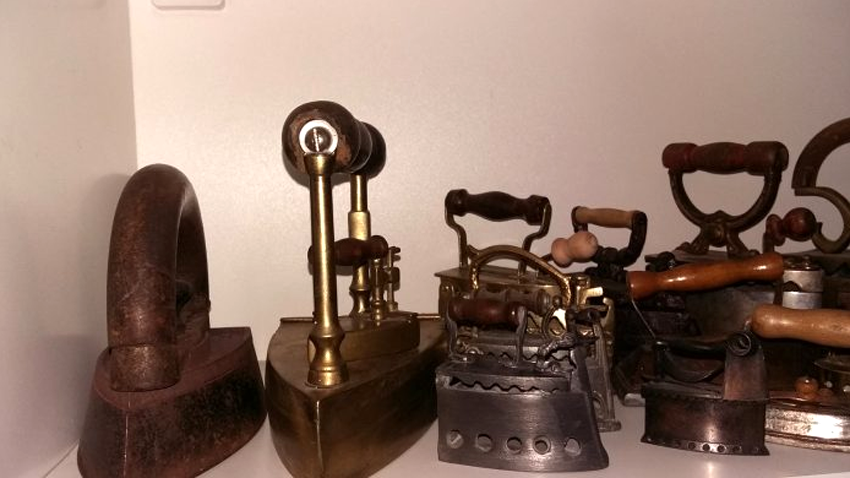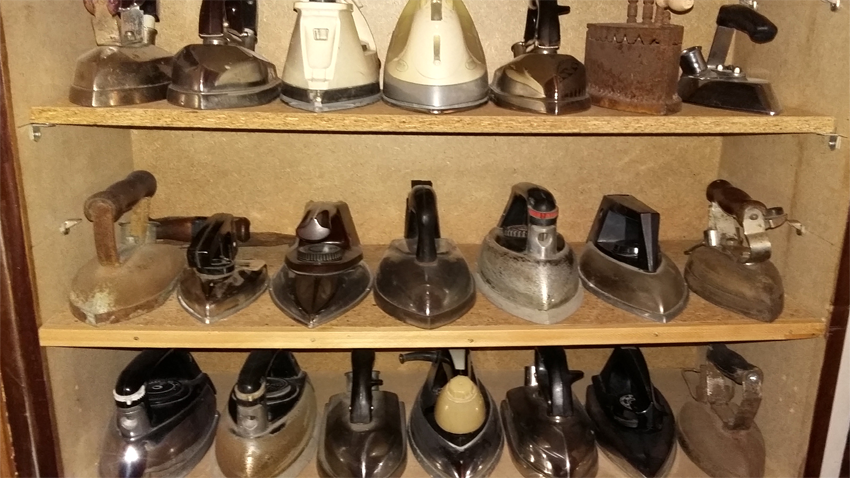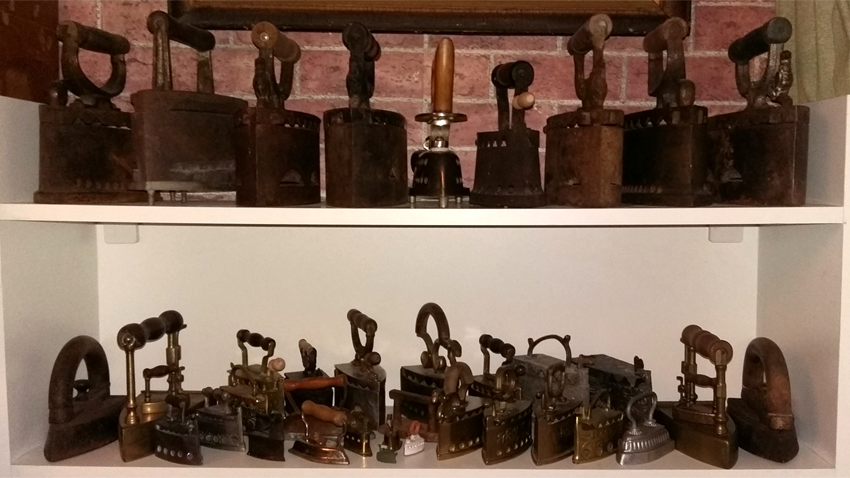Starting as a joke, an idea gave birth to a whole collection, so diverse that it could be presented in an uncommon sort of museum – one dedicated to irons. From the oldest models working on charcoal to the electric ones, of various sizes and some of them real works of art, all irons in this collection tell a different story. The creator of this unusual collection is Dimitar Dobrev, a painter from the city of Plovdiv, who discovered his first iron 45 years ago, thrown away as an unnecessary item. Gradually, he got hold of so many antique irons that he decided to donate them to the Municipal Institute called Ancient Plovdiv. His desire is that more people would have the chance to see these “engineering achievements from the 19th century to the present day” and to trace their reincarnations over time.
For the time being, the exhibits can be seen at the Hindliyan House in the Plovdiv Old Town, as the goal is to establish later the first Bulgarian museum of irons. The collection is open to new exhibits that the artist continues to search for. His passion for irons proved contagious also for his friends who bring him irons as an expensive souvenir from different parts of the world. The oldest specimen in the collection dates back to about 1880-1890 and was manufactured by an old Birmingham-based weapons producer. In Bulgaria irons used to be manufactured in Plovdiv, Varna, Vratsa, Sevlievo and the Arsenal military plant in Kazanlak.

More from Dimitar Dobrev:
“I have a folder in my computer where I collect photos and describe the history of each iron. There are such models among them that people didn't even think they could see. I have an iron produced in Vratsa weighing 10 kg. In the past, fabrics were rough and therefore, in addition to the heat, weight was also required for ironing. I remember when I was a child, there was a tailor in the neighbourhood. I will never forget his charcoal iron which had a chimney to keep the air circulating when burning the coal. I have quite a few of these in my collection now. They are different and have special flaps; they cannot be described with words, so they have to be seen. There are irons that burn with alcohol and gas; they were manufactured in the USA and Western Europe. They were invented after those fired by charcoal, because as you might guess, coal is pretty dirty. There are other types where a heating core is inserted, which is first heated in the stove and then placed inside the iron itself.”
As time goes by, irons get more and more sophisticated designs, and at the start of the 20th century the first electric models appeared on the market.

„One of the first electric irons is for three types of voltage -120, 150 and 220 volts. We are used to having more electric plugs with two outlets and a cup for safer handling, and these have three outlets and are switched on and off with pins, depending on the voltage used. I also have irons made of porcelain. They were called box irons as the ladies once used to store their jewellery inside”, says Dimitar Dobrev.
At the moment, the irons in Dimitar Dobrev’s collection number 680, and adding the stands and with the boxes the number exceeds one thousand. Among them are two irons with the images of Romulus and Remus and one with a handle depicting the Roman goddess Vesta.

The world's largest museum showcasing 4,000 irons is located in France. Germany has several irons museums with hundreds of exhibits. If the idea of the Bulgarian artist Dimitar Dobrev comes to life, the irons museum in Plovdiv will be the largest in the Balkans.
Edited by Darina Grigorova
English version Rossitsa Petcova
Photos: europlovdiv.comOn 12 November at 5:30 p.m., Cardinal Pierbattista Pizzaballa, Latin Patriarch of Jerusalem, will give a lecture in the Marin Drinov Hall of the Bulgarian Academy of Sciences, at the invitation of the corresponding member of the Pontifical Committee for..
To mark the 65th anniversary of the Cuban animation studio Instituto Cubano del Arte e Industria Cinematográficos (ICAIC), Bulgarian director Andrey Hadjivasilev conducted a film workshop with students in Havana, the Bulgarian Embassy in Havana..
On this day five years ago (in 2020), a memorial plaque dedicated to the world-renowned Bulgarian bass Nicolai Ghiaurov (1929–2004) was unveiled in Modena. It was in this Italian city that the celebrated opera singer lived and worked from 1981 until his..

+359 2 9336 661
